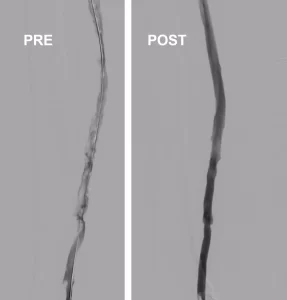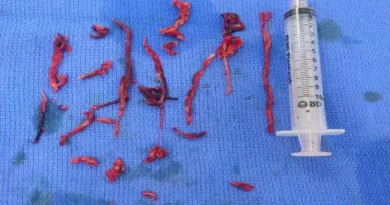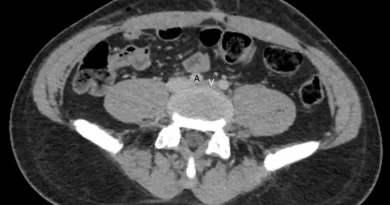Measuring Lower Extremity Clot
When a patient presents with a deep vein thrombosis, we take note of clot location and clot extent. It matters to us if the clot is proximal or if it is distal. And it sometimes also interests us if there is more or less clot. However, in reality, we do not all speak the same language when it comes to measuring lower extremity clot.
Measuring Lower Extremity Clot Matters
Measuring lower extremity clot matters for clinical and for research purposes.
First, clinically, we need to be able to know clot distribution for several purposes:
- To communicate the distribution of a deep vein thrombosis
- When we want to compare a previous scan to a new one to assess response to therapy or progression over time
- Patients with higher amounts of more proximal clot may benefit from intervention to reduce the chance of post thrombotic syndrome.
Second, measuring lower extremity clot can help with research applications. This is especially relevant when we want to describe clot location and clot distribution to measure the effect of a treatment.
Marder Score: The Most Common Tool to Measure Clot Extent
The most common tool for measuring lower extremity clot it the Marder Score. Dr. Victor J. Marder described his method in 1977. It relies on venography. The score divides the veins of the lower extremity into segments. Each segment is scored according to degree of occlusion. Then, the sum of all segments offers insight regarding the amount of clot a patient has.

Limitations of the Marder Score
Many studies have utilized the Marder Score. Most famous is the ATTRACT trial that compared pharmacomechanical thrombectomy with anticoagulation to anticoagulation alone for deep vein thrombosis. But the score has limitations.
First, sometimes we do not need to know about distal clot. For instance, the ATTRACT trial focused on patients with proximal clot. The authors overcame this limitation by creating a “modified” score, that only included the proximal segments.
Second, the score clumps together several vein segments. This means that it is impossible to distinguish between patients with IVC thrombosis or iliac vein thrombosis. Even more, the Marder score does not allow to distinguish between common iliac vein and external iliac vein involvement.
Third, the score does not address the issue of duplicate veins. But these are not rare. So in practice, we need to be able to communicate this information when it happens.
Finally, the Marder score asks that we score a vein segment with fewer points for partial occlusion than for complete occlusion. But assessing the degree of partial occlusion is subjective. Deciding how many points to assign to a location can be challenging.
Must we Use Venography to Calculate the Marder Score?
When Marder developed his system, venography was practically the only method to assess lower extremity clot. But in modern practice, we have more tools at our disposal. So can we use duplex ultrasonography to measure the Marder score? Or can we apply intravascular ultrasound (IVUS) to get a better sense of clot extent? There are very limited studies that looked into this matter. So it is hard to say with certainty if we will achieve similar results. But still, in good hands IVUS may be superior to venography in measuring lower extremity clot. Indeed, we see IVUS more often now both in clinical practice and in studies looking into venous disease.
Alternative Scores For Measuring Lower Extremity Clot
To overcome these limitations, several groups have suggested alternative scoring systems. For instance, Bjorgell et al. suggested a system that divides the lower extremity veins into more segments compared to the Marder score. They argue that their system compensate for the limitations of the Marder scoring system. But in practice, it does not seem like there is much use for their system.
Another solution is to apply weighting to the vein segments in the Marder score. In other words, if you are able to standardize the assessment of occlusion, you can probably use the Marder score to assess the effect of treatment by measuring lower extremity clot in a semi-quantitative manner.



